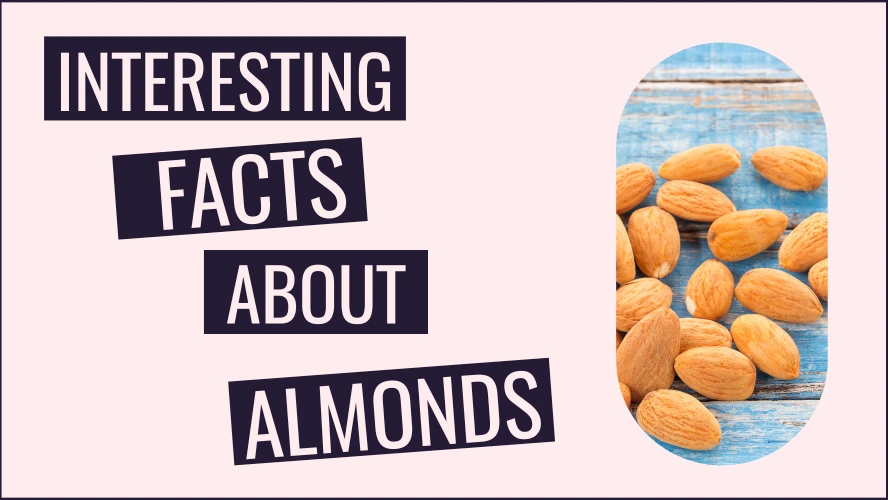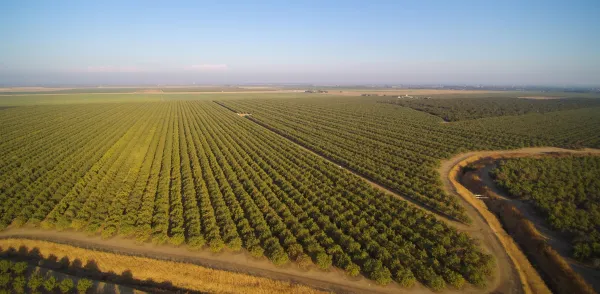The Most Interesting Facts About Almonds

Almonds are a popular choice for snacking, especially among the health-conscious. But their appeal extends far beyond their delicious taste. Despite their widespread consumption, many people are still unaware of the rich tapestry of facts that make almonds more than just an everyday treat.
In this article, we’ll explore the captivating aspects of this remarkable nut. Topics will range from its diverse culinary applications to its unusual botanical classification.
1. Not All Almonds Are The Same
Here’s an interesting fact not many people know: not all almonds are the same! In reality, there are over 40 different almond cultivars (varieties), which differ according to shape, size, and even how they’re processed. Some of the most common and popular cultivars are:
- Nonpareil
- Independence
- Monterey
- Wood Colony
Aside from their physical differences, you can also find almonds at different prices. The most expensive ones are Mamra Badams, which are grown in countries like Afghanistan, Iran, and the Kashmir Valley of India.
2. Almonds Can Be Turned Into Other Foods
To say that almonds are a versatile food item is an understatement. You can process them into derivatives like milk, flour, oil, and butter. Not only do almonds taste amazing when you change their form and use them in cooking, but they also replace other foods some people cannot consume.

For example, almond milk is a staple in many kitchens and coffee shops, often used as a dairy alternative. Almond flour has become a go-to ingredient for bakers, particularly those looking for a gluten-free option. Another popular derivative is almond butter, known for its rich and creamy texture. Additionally, almond oil is highly valued for its use in cooking and skincare.
3. Almonds Are Related To Peaches
Interestingly, almonds and peaches share more than you might think. Both are members of the ‘Prunus’ botanical family and are technically drupes. While almonds are often classified as nuts for culinary purposes, they are, in botanical terms, the seed of a drupe.
Additionally, this family connection extends to other delicious drupes. A few examples are plums, cherries, nectarines, and apricots.
4. Almonds Can Last Up To 2 Years
Natural almonds have a long shelf life, usually up to 2 years. However, it’s imperative to note that longevity can vary based on storage conditions. For tips on maximizing their shelf life, consult our guide on proper almond storage.
This allows you to keep a considerable amount of nuts for diverse uses without worrying about rapid spoilage.
5. California is the World’s Almond Powerhouse
The Golden State is not just a contributor to almond production; it’s a global leader. With a staggering 80% of the world’s supply coming from its orchards, California is a major player in the industry.

The climate is ideal for almond cultivation, and orchards span from the Central Valley to the southern regions, covering vast acres of land.
6. Almonds Have Significant Economic Weight
California’s dominance has substantial implications for the global nut trade. The state’s almond sector employs thousands and generates billions in revenue. This establishes the almond industry as a cornerstone in both California’s and the world’s agricultural sectors.
7. Almond Trees Take Years to Reach Full Production
Patience is a virtue in the world of almond farming. Unlike some crops that yield produce within a single growing season, the almond tree lifecycle is complex and requires a long commitment. It takes about 3 to 4 years to start bearing fruit. But that’s not the end of the story; reaching full production can take as long as 8 years.
This extended timeline gives farmers ample time to nurture and care for the trees. This extended timeline allows farmers to ensure the trees produce high-quality almonds. However, it also means that it’s a long-term investment, both in time and resources.
8. Almonds Have a Symbiotic Relationship with Bees

Almonds have a unique relationship with bees that’s essential for their production. Unlike many other crops, almonds rely heavily on bee pollination. This natural partnership is a critical factor in the success of almond orchards. It makes bees an indispensable part of the almond farming ecosystem.
This relationship is not just beneficial for almond production. It’s a symbiotic interaction that serves both parties. For bees, almond blossoms are a valuable source of early-season nectar. However, this interdependence also brings its own set of challenges that require careful management.
Stay tuned for a future post that digs deeper into this fascinating relationship.
9. Almonds Were Once Toxic
The almonds we enjoy today have evolved significantly from their wild ancestors, which were actually toxic. Early almonds contained high levels of amygdalin, a compound that turns into cyanide when ingested. Over time, however, humans selectively bred almonds to produce varieties with lower amygdalin levels. Because of that, modern varieties are safe for consumption.
This transformation from a toxic nut to a beloved snack is a testament to human ingenuity and the power of selective breeding. This change also contributes an intriguing chapter to the long history of almonds. It shows how far they’ve come from their hazardous origins to their current widespread use.
10. Almond Hulls Have Many Uses
Another fascinating fact is that, during almond processing, nothing goes to waste. One of the most extraordinary aspects of this industry is how the hulls are used. Often overlooked, these outer layers serve multiple purposes beyond the orchard.

Almond hulls find their way into various applications, from livestock feed to alternative fuel sources. Their versatility makes them a valuable byproduct in the almond production chain. They contribute to a more sustainable and efficient farming system.
While the hulls may not be the star of the show, their role in supporting a zero-waste approach to almond farming is noteworthy.
11. Almonds Hold Cultural Significance Around the World
Almonds have a rich cultural tapestry that extends beyond culinary uses. They hold various meanings in different cultures. For example, they are associated with good luck and prosperity, and play a role in traditional ceremonies.
For those interested in this topic, we have a post analyzing almond meanings and traditions in different cultures, countries, and traditions.
Final Thoughts
The story of almonds is a tale interwoven with innovation, tradition, and a dash of botanical intrigue. As you go about your day, whether that involves cooking, snacking, or even farming, I invite you to see almonds in a new light.
Take the opportunity to explore their diverse forms, investigate their rich history, or even contribute to sustainable practices by choosing responsibly farmed options.
As we’ve seen, the almond is more than just a nut. It plays a vital role in our food systems, economies, and even our cultural traditions.





